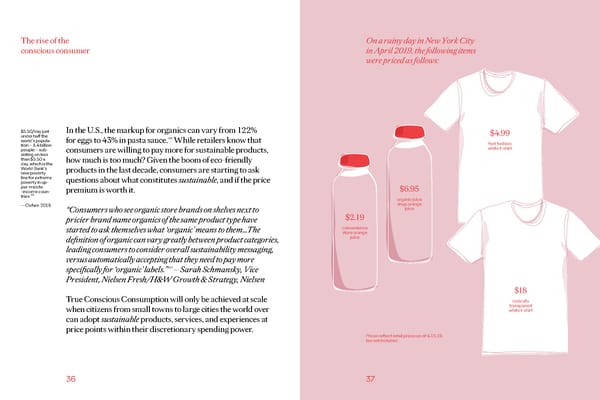The rise of the On a rainy day in New York City conscious consumer in April 2019, the following items were priced as follows: $5.50/day just In the U.S., the markup for organics can vary from 122% $4.99 under half the (26) world’s popula- for eggs to 43% in pasta sauce. While retailers know that fast fashion tion – 3.4 billion white t-shirt people – sub- consumers are willing to pay more for sustainable products, sisting on less than $5.50 a how much is too much? Given the boom of eco-friendly day, which is the World Bank’s products in the last decade, consumers are starting to ask new poverty line for extreme questions about what constitutes sustainable, and if the price poverty in up- per-middle premium is worth it. $6.95 -income coun- (25) tries. organic juice shop orange ―Oxfam 2019 “Consumers who see organic store brands on shelves next to juice pricier brand name organics of the same product type have $2.19 started to ask themselves what ‘organic’ means to them...The convenience store orange definition of organic can vary greatly between product categories, juice leading consumers to consider overall sustainability messaging, versus automatically accepting that they need to pay more (27) specifically for ‘organic’ labels.” — Sarah Schmansky, Vice President, Nielsen Fresh/H&W Growth & Strategy, Nielsen $18 True Conscious Consumption will only be achieved at scale radically transparent when citizens from small towns to large cities the world over white t-shirt can adopt sustainable products, services, and experiences at price points within their discretionary spending power. Prices reflect retail prices on of 4.15.19, tax not included. 36 37
 Making Brands Matter Page 18 Page 20
Making Brands Matter Page 18 Page 20